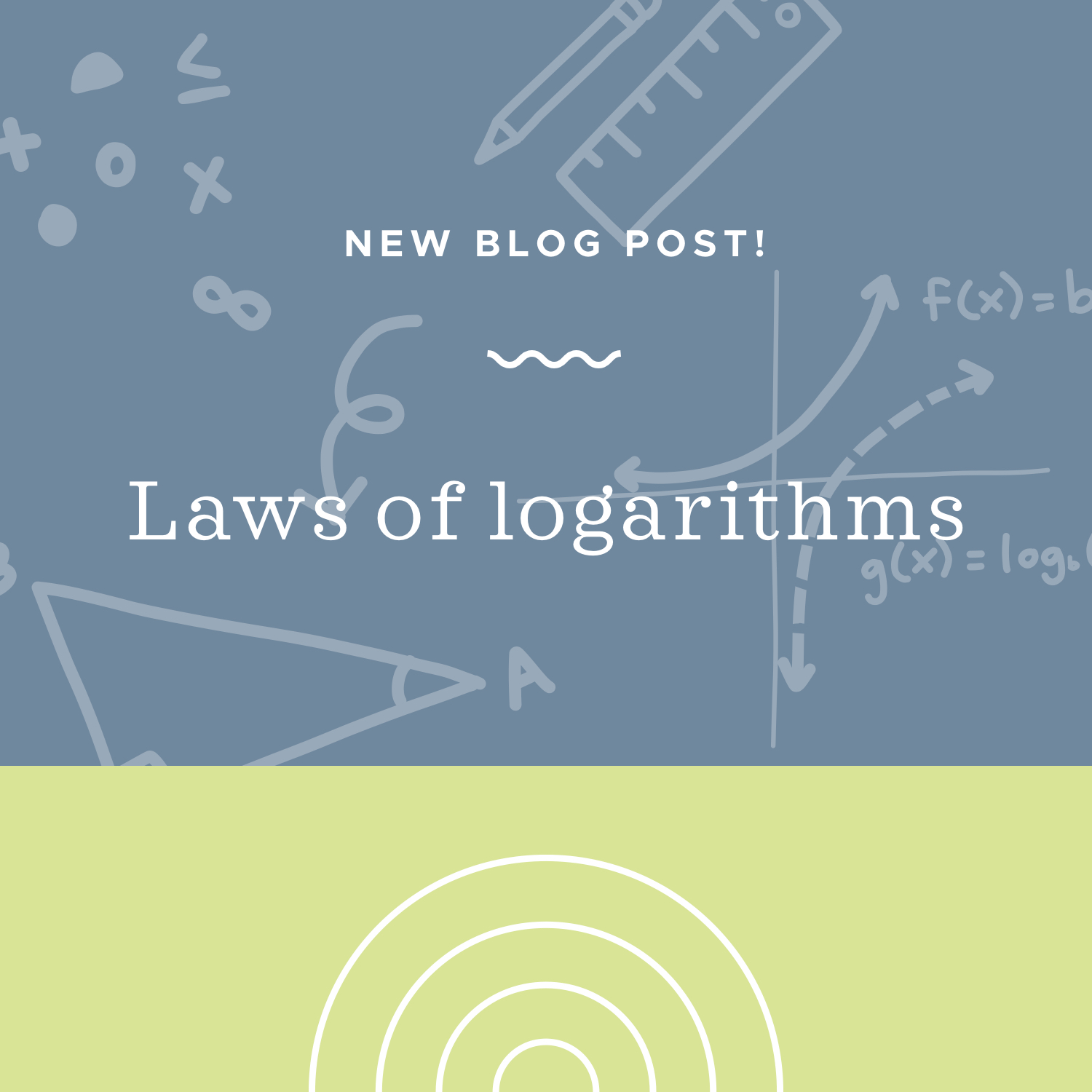Using laws of logarithms (laws of logs) to solve log problems
The general log rule to convert log functions to exponential functions and vice versa
We know already the general rule that allows us to move back and forth between the logarithm and exponents.
???a^x=y\quad\text{implies}\quad\log_a{(y)}=x???
And we can continue to use this rule whenever it makes sense in any of these log problems. But there are other rules we can use to work with logs, which we’ll cover in this section.
Hi! I'm krista.
I create online courses to help you rock your math class. Read more.
The product, quotient, and power rule for logs
The product rule
When the argument of the log is a product of two values, those two values can be separated into different log functions, and the log functions added together.
???\log_a(xy)=\log_ax+\log_ay???
Keep in mind that this rule can be used in both directions. Given ???\log_a(xy)???, you can expand the logarithm into ???\log_ax+\log_ay???. And given the expanded expression ???\log_ax+\log_ay???, you can condense the logarithm into ???\log_a(xy)???.
The bases of separate logs must be equal in order to use the product rule. In other words, you can use the product rule to condense ???\log_ax+\log_ay???, but you cannot use it to condense ???\log_ax+\log_by???.
The quotient rule
When the argument of the log is a quotient of two values, those two values can be separated into different log functions, taking the difference of the log function of the numerator, and the log function of the denominator.
???\log_a\left(\frac{x}{y}\right)=\log_ax-\log_ay???
As before, this rule can be used in both directions. Given ???\log_a{(x/y)}???, you can expand the logarithm into ???\log_ax-\log_ay???. And given the expanded expression ???\log_ax-\log_ay???, you can condense the logarithm into ???\log_a{(x/y)}???.
Like with the product rule, the bases of separate logs must be equal in order to use the quotient rule. In other words, you can use the quotient rule to condense ???\log_ax-\log_ay???, but you cannot use it to condense ???\log_ax-\log_by???.
The power rule
When the argument of the log is a power function, the exponent can be pulled out in front of the log function.
???\log_a{(x^n)}=n\log_ax???
As before, this rule can be used in both directions. Given ???\log_a{(x^n)}???, you can rewrite the expression as ???n\log_ax???. And given the expression ???n\log_ax???, you can rewrite it as ???\log_a{(x^n)}???.
Combining log rules
Product, quotient, and power rules for logarithms, as well as the general rule for logs (and the change of base formula we’ll cover in the next lesson), can all be used together, in any combination, in order to solve log problems.
How to combine laws of logarithms to solve logs
Take the course
Want to learn more about Algebra 2? I have a step-by-step course for that. :)
Simplifying the sum of logs
Example
Write the expression as a rational number if possible, or if not, as a single logarithm.
???\log_464+\log_416???
First, we can use the rule
???\log_ax+\log_ay=\log(xy)???
because both logarithms have the same base.
???\log_464+\log_416???
???\log_4(64 \cdot 16)???
???\log_4(1,024)???
To simplify further, use the relationship between exponents and logarithms,
If ???\log_a{(y)}=x??? then ???a^x=y???
So if we let ???\log_41,024=x??? then
???4^x=1,024???
???4^x=4^5???
???x=5???
When the argument of the log is a product of two values, those two values can be separated into different log functions, and the log functions added together.
Simplifying the difference of logs
Example
Write the expression as a single logarithm.
???\log_314-2\log_35???
First we can use the power rule for logs
???\log_a{(x^n)}=n\log_ax???
on the second term to get
???\log_314-\log_35^2???
???\log_314-\log_325???
Because the bases of these logs are the same, we can use the quotient rule for logs
???\log_ax-\log_ay=\log_a\left(\frac{x}{y}\right)???
to get
???\log_3\frac{14}{25}???
We weren’t asked to do so, but at this point we could also use the general rule for logs to find an decimal value for this log.
???3^x=\frac{14}{25}???
???x\approx-0.5278???






